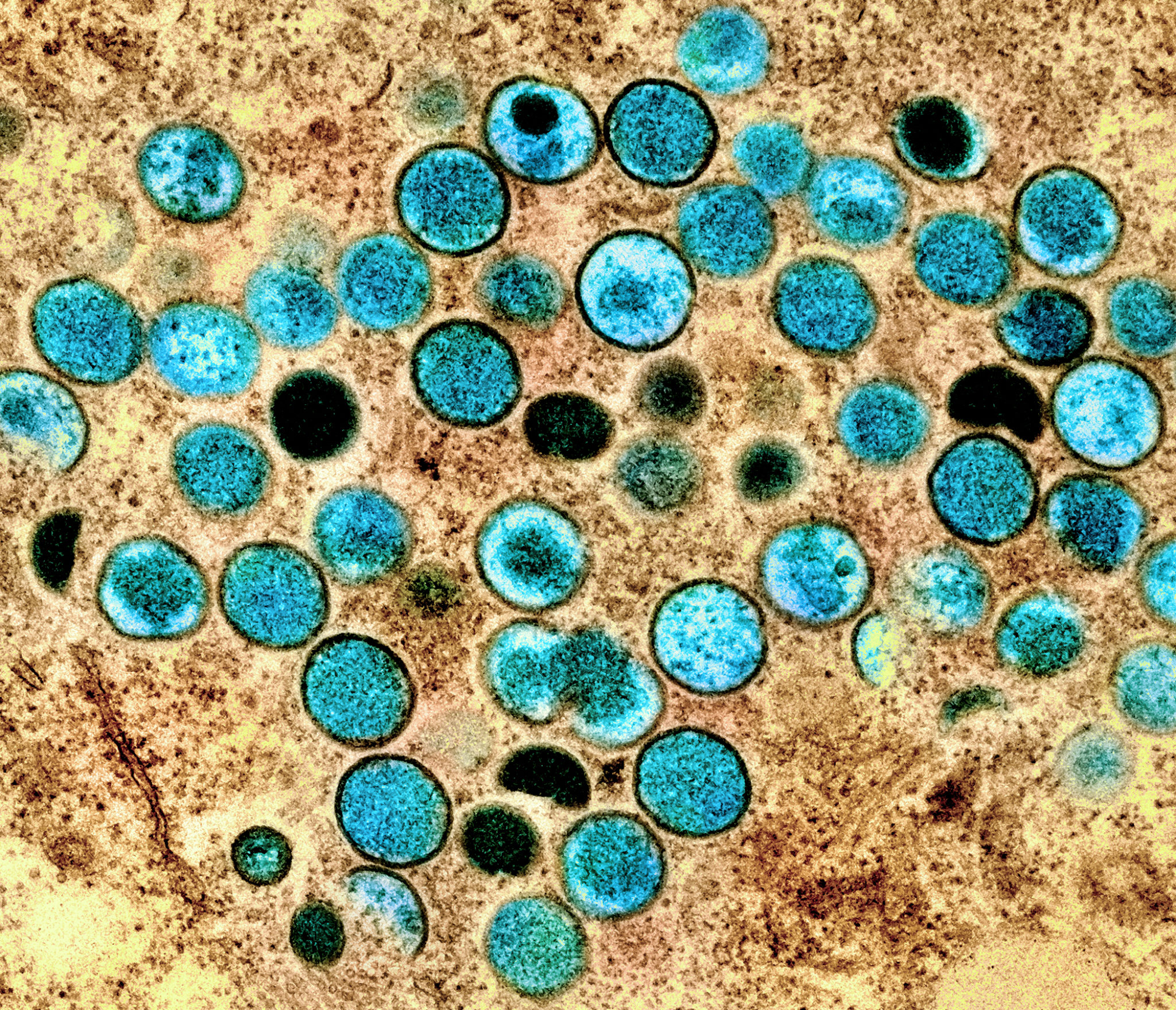Yale researchers analyze containment strategies for monkeypox
Researchers at the Yale School of Public Health analyzed the extent to which monkeypox containment strategies need to be followed in order to avoid it becoming an endemic disease, including how these strategies should be applied on college campuses.

Wikimedia Commons
Four months after the first case of monkeypox in the United States was recorded, researchers at the Yale School of Public Health are investigating and modeling strategies for containing the disease.
Monkeypox is an orthopoxvirus disease that spreads through close contact. Since May, cases in the United States have continued to climb. Proposed strategies for containing the outbreak include increasing rates of detection, contact tracing and vaccination. Melanie Chitwood GRD ’26, a graduate student in the epidemiology department at the Yale School of Public Health and the lead author of a new study, used a mathematical model to determine the rate of vaccination necessary to avoid monkeypox becoming endemic to the United States.
Through this model, Chitwood looked at different combinations of public health measures as well as multiple potential contagion levels. She found that, on average, at least one-third of all at-risk populations should get vaccinated.
“We wanted to look at what combination of public health measures would lead the epidemic to start to decline and eventually die out and we used a Markov model, which is a probabilistic model, to answer that question,” Chitwood explained.
The first symptoms of monkeypox can appear up to three weeks after exposure. An infected person will first display flu-like symptoms and typically about 48 hours later develop a rash. Monkeypox spreads through intimate contact, direct contact with the rash of an infected person or fabrics or surfaces an infected person was wearing or using. According to Chitwood, the most at-risk populations for contracting monkeypox are those that engage in high-risk sexual behaviors. Chitwood stressed that people infected with monkeypox that are asymptomatic are not contagious.
When asked about methods for containing monkeypox, Chitwood explained that it is very important to enhance systems for its detection. This would involve spreading more information about associated symptoms. Chitwood also explained that contact tracing and self-isolation if infected are important strategies for combating the spread of this disease.
Monkeypox is not a novel disease. In fact, it has been endemic to parts of Africa for many years. Therefore, a vaccine was already developed before it was first detected in the United States. People currently eligible for the vaccine include sexually active men who have sex with men, people who have had more than two sexual partners within the past two weeks and those who came into close contact with someone infected. The vaccine is most effective when given to someone directly after exposure. If an infected person receives the vaccine in this time frame, they can be asymptomatic or the disease’s severe symptoms can be prevented.
The aforementioned containment strategies are essential to put into practice to avoid monkeypox becoming endemic, Chitwood said. Chitwood and colleagues used a mathematical model that takes into account multiple possibilities for how strictly the containment measures are being followed in addition to monkeypox transmissibility. They found that, on average, 33 percent of high-risk populations in the United States need to be vaccinated. The researchers found that in the case that monkeypox is highly contagious and there is a low detection of the disease, 40 to 50 percent of high-risk populations would need to be vaccinated.
“In congregate university settings and the close contact that happens there, there is some concern that there might be some outbreaks,” said Alexandra Savinkina ’27, a graduate student in the epidemiology department at YSPH and co-author of the study.
For this reason, Savinkina worked to develop a transmission model that looks at the likelihood of an outbreak on college campuses and what containment policies could be put into place in that particular setting.
Savinkina found that in order to reduce monkeypox cases on campus, all close contacts should be vaccinated, but they do not need to be put in isolation. Furthermore, she explained that the isolation of infected persons does not have to look the same as it did for COVID-19 since the disease has not yet been proven to be airborne.
The isolation period for monkeypox can be up to four weeks. A person is considered contagious until all of their rashes have healed and the scabs have fallen off. Chitwood said that if the rash is in an area where it can be covered, an infected person may not have to completely isolate.
“I am glad to know that all contacts would not have to completely isolate given the four-week quarantine period,” said Liddy Boland ’25. “It would be really difficult to stay on top of school work, especially since many professors have moved away from providing online formats of lectures.”
When speaking about how to contain monkeypox specifically on a college campus, Savinkina emphasized that the most impactful tactic would be to educate students on how to detect the disease.
“[Detecting monkeypox] is a little bit different than COVID; there will not be mass surveillance or mass screening, so it depends a lot more on students coming forward,” said Savinkina.
In order for students to recognize the disease and bring it to attention, they must know the signs. However, both Chitwood and Savinkina emphasized that monkeypox is not as transmissible as COVID-19, does not spread asymptomatically and that there is already a vaccine in place. Despite these factors, it is still important to be proactive now in containing monkeypox.
As of Sept. 6, there have been 20,733 confirmed cases of monkeypox in the United States according to the CDC.








